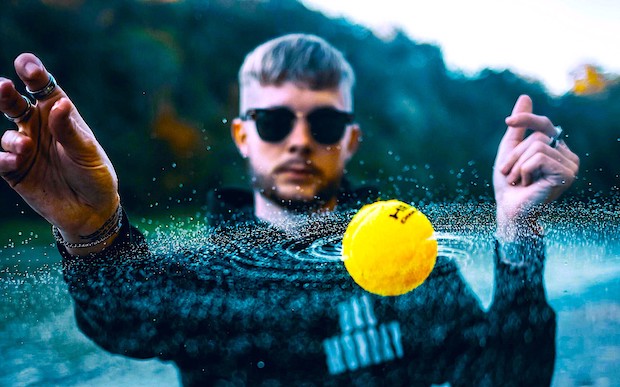I got sick of the yes sir, no sir, three bags full sir life.
I didn’t live with intention. I lived like a caged tiger in a zoo looking for his next kill. It sucked the life out of me.
On the day I quit the unintentional, reactive life the vultures came in to eat up the leftovers.
No joke, a fellow employee took all my hand-me-downs — phone, laptop, bag. He thought he’d won the lottery.
“Good luck, pal” he shouted with a smirk.
At 36 years old, I grew tired of living an unintentional life. A life that lacked purpose and involved dancing for a group of dirty old men in suits while they laughed at me and my lack of college education. They stank too.
I’m not the most well-educated guy. But I’m no dumbass.
What I lack in college education I make up for with books and real-life experiments that demonstrate some level of execution and proof-of-work.
The intentional life looks like this
- Less stress
- No boss to report to
- Fewer people to impress
- A proactive rather than reactive life
- Saying whatever the hell you want online
- No job to attend at an overpriced office in a busy city
I know what some people are thinking: This is a BS fantasy. Hustle porn! I’ve come to realize not everyone will get the point of an intentional life.
Many people will gladly sleepwalk through life. They’ll happily die at 25 and get buried at 75. They’ll sit in an office cubicle as a professional button-pusher in a penguin suit and smile for the office tourists.
Or they’ll work an assembly-line, 8-hour workday life with presenteeism at its core and following the rules as the guiding principle.
They won’t dare look back at history and see the modern workday we experience as an old out-of-date factory worker model designed for the now deceased industrial age. Even the information age is dead, thanks to what artificial intelligence is doing.
There’s nothing I can do about people’s skepticism or how some love to turn every helpful life blueprint into satire content to get ‘likes’ from couch slobs.
This intentional life isn’t for everyone … and I’m cool with it.
It requires a level of optimism and personal responsibility that we’re not born with. An intentional life is a learned life skill.
A powerful mission
The mission of the unintentional life is to show up and make money.
Everybody you encounter is an opportunity to upgrade your food and shelter. An intentional life is the opposite.
It’s based on a powerful mission. Mine is to help more people understand that if you write emails and send texts on your phone, you’re already an online writer. I want the gift of writing to touch everybody on the planet.
When people write they share ideas. Idea sharing is how we debate topics and take real action.
Takeaway: come up with a mission. What tribe of people can you help?
A mostly empty calendar
An intentional life dies when it’s run by a Google or Outlook calendar.
The intentional life needs more open space in your calendar, so you can think deeply about the problems you seek to solve with your mission.
It requires saying no a lot without guilt. When the calendar is mostly blank it sets you free from the handcuffs of other people’s obligations.
Email comes not far behind. James Altucher says, “Emails are a suggestion but not an obligation.”
If you want to live the intentional life you have to accept that most emails are better left without a response. Urgent emails will always get a follow-up or even a phone call.
Takeaway: take control of your calendar and emails with the word “no.”
Natural motivation from 1996
Human motivation is screwed up.
Technology from 1996 and onwards has got us addicted to fake dopamine rewards that fry our dopamine receptors. This means when normal events in life happen, they don’t make us feel good enough.
So we’re always chasing bigger dopamine highs.

Photo by Scotty Turner on Unsplash
This reality destroys natural motivation. It makes normal life seem boring. The solution is a dopamine detox.
When your dopamine levels reset, you can get back on track and prioritize what matters — not what gives a dopamine junkie a high.
A dopamine detox looks like this:
- No p*rn (includes the usual places, but also Instagram-style content)
- Distance from online events or people that trigger you
- Phone notifications for 99.9% of apps turned off
- Less time on social media
Takeaway: it’s hard to be intentional when dopamine addiction is running your brain into a brick wall.
An innovation-first mindset
No, I didn’t just put back on my penguin suit so I could drop the ultimate corporate buzzword of innovation.
Innovation helps our minds grow and leads us to our zone of genius. The components that make up this innovation mindset are:
1. Experiments
Requires no plan. It’s a small project. The aim isn’t to succeed. It’s to test a theory or idea and see what happens. The more experiments the more practical lessons learned.
2. Small bets
An ability to deal with change and to always grow needs a level of risk. No risk, zero rewards (and painful regrets).
The goal isn’t to bet granny’s farm on one idea and go all-in. It’s to place several small bets after work hours and see if any pay off.
3. New people
The same people in your life right now won’t help you get to the next level.
Innovators constantly seek out new people to see what other ideas or opinions exist.
This constant habit of making new connections is how they crawl their way up the relationship ladder to opportunities that look out of reach.
New People = New Opportunities
4. Execution
Action is where the real innovation is found.
An intentional life is built on a mountain of actions that help reveal the path forward, rather than try to predict what will happen.
5. Data
Execution produces data — a fancy way of saying it produces engagement, comments, purchases, conversations, introductions, and ideas.
This data can then be analyzed to make informed decisions, rather than guessing or sending “hi” messages online to strangers and asking them to mentor you for free (gets ya nowhere).
6. Build in public
Innovators don’t hide in log cabins and smoke pipes.
They’re not afraid of people knowing their ideas or having anyone copy them. They encourage theft as much as possible
Innovators build their dreams in public for others to see. Why? So they can attract more people to their mission.
Habits, systems, automation
An unintentional life is full of goals.
These are someday dreams that will probably never happen and go to the grave. Some of the best ideas in history are in cemeteries with their owners who are now at one with the dirt.
An intentional life starts with habits. These are the routines you will follow every day to build the life you say you want to create.
These habits are backed up by systems that remove the need to make lots of decisions that tire your brain out.
The system starts out as manual. Over time helpful automation — such as Zapier or a powerful note-taking app like Notion — take over the heavy lifting. The system typically sits in a Google Drive so that others (freelancers / virtual assistants) may access it in the future
The time saved by these systems helps sharpen your habits.
Takeaway: goals are fantasies. Aim for habits with automated systems.
Ownership of everything you do
The take rate of modern institutions and corporations is enormous.
Most of the value created at work goes to your boss, employer, and shareholders. You get a tiny slither of the profit that keeps you just over broke — unless layoffs happen, then you get nothing.
The finance industry has a high take rate too. You give them your money and they make most of the interest off it. If the bank or finance app goes bankrupt because they gambled too much, ohhh well, you get zero. Soz.
Even for online creators the take rate is absurd. Marketplaces, apps, and social media platforms get most of the value creators make. Ad money pays for their employees’ lunches, not YOUR rent.
Ownership of content is non-existent. LinkedIn can literally delete your digital resume. Facebook/Meta can wipe your family photos from existence. Gmail can delete your email account.
An intentional life is one you own.
Your digital assets move increasingly into your world — email lists, websites, decentralized Web3 apps.
When you own more of what you do, the money you make increases. Money creates more free time which gets you closer to your zone of genius.
Takeaway: start to own your online identity. Assume if you have odd political beliefs you can be exiled from any tech app. Cause you can.
Win the game together
It’s hard to reach your zone of genius alone. Sorry.
It’s taken me decades to learn that lesson. Life is just easier when you work together with others to build an intentional life.
That’s why online communities and masterminds are crucial. The future of business will be community centered, too, so may as well get a headstart.
Your experience and dataset are limited. But when combined with others who have similar habits and systems, leverage and exponential results become possible.
Youtuber Mr Beast’s success isn’t an accident. He grew his Youtube subscribers with other people just like him who were obsessed with the intentional life he wanted to live.
Don’t mistake genius for community-built success.
Takeaway: start to look for communities or masterminds to join.
Parting thought
- Start to build an intentional life.
- Experience real freedom.
- Take back control.
Access your zone of genius where levels of success you never thought possible are found.
There’s nothing better than true freedom, where you do whatever you want whenever you want. A life where working today is optional instead of a must for survival.


